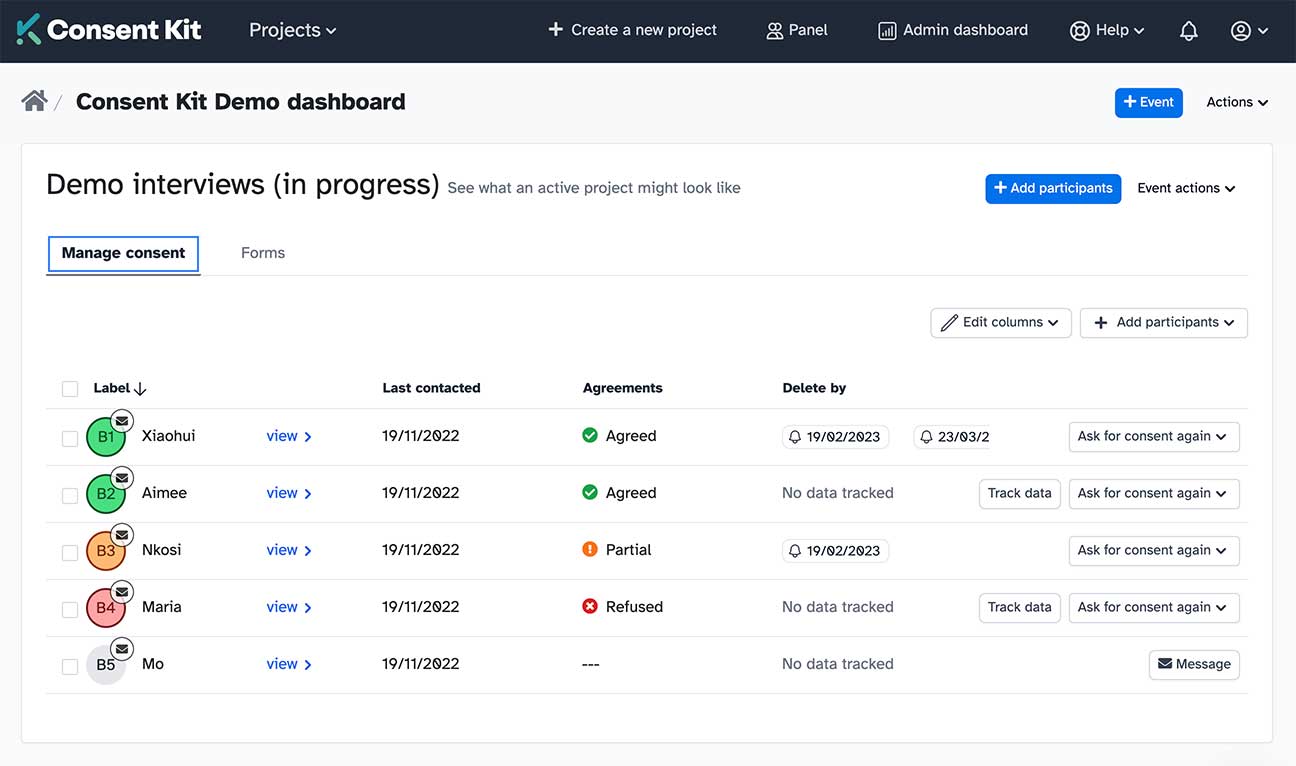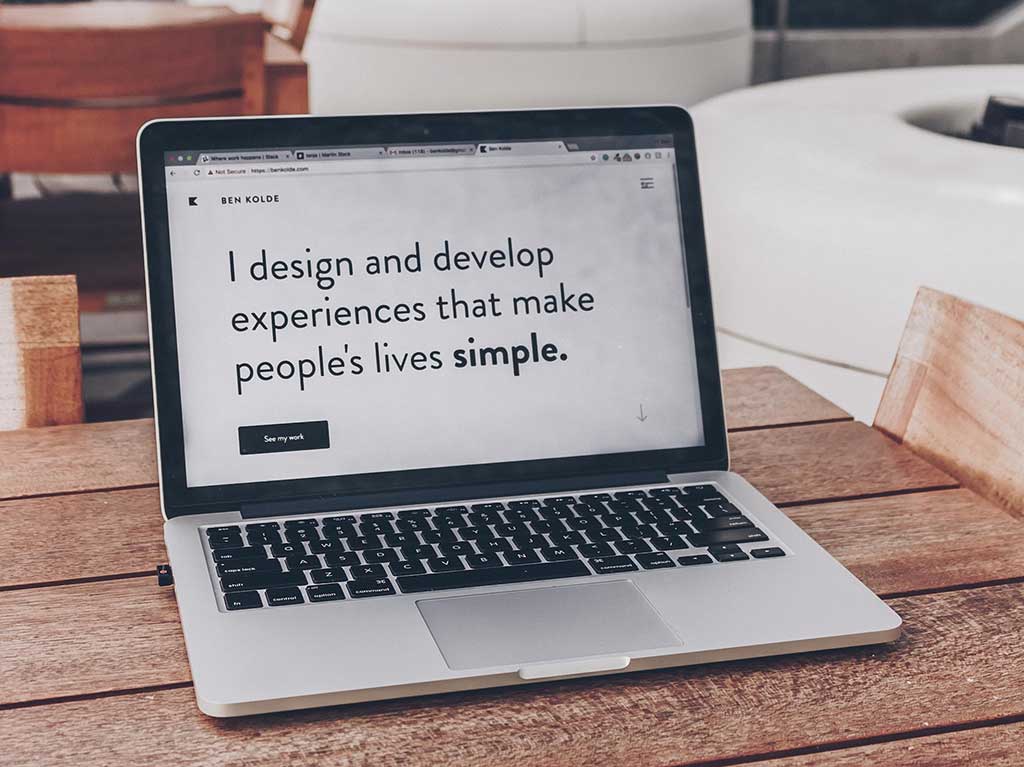Fundamentals
How To Create A UX Research Plan

Written by: Phil Hesketh
Published on: Last updated:
Having a clear plan in place is essential before you spend valuable time and resources on any type of user research.
Whether it’s a spreadsheet, slides, or a simple document, a research plan will give your team a clear direction to help everyone stay on track and avoid the many logistical pitfalls that can derail this type of project.
Our template will teach you how to create a UX research plan from scratch in a few simple steps—even if you’ve never written one before.
What is a UX Research plan?
A user research (UX) plan is an outline of your project which maps out all the steps you will take to gather data and get the information you need to reach a specific goal (e.g. running live user testing before a new product launch).
Once you’ve created your plan, it can be shared with key stakeholders and team members so that everyone understands the project’s goals, direction, scope, and timeframe.
You might not even look at this plan after you’ve written and shared it, but it’s a useful document you can refer to during the course of your research, in case you need to do things like:
Remind stakeholders why this study is necessary
Remind your team about approximate milestone dates
Ensure you’re not getting sidetracked from the original objectives
Explain why specific research participants were chosen
Your UX plan doesn’t need to be a formal document. It’s just a way to help kick off your project, set parameters, and keep everyone aligned during the course of the research.
What should a UX research plan include?
When you’re thinking about how to structure a UX research plan, you’ll need to make sure you include everything that will happen from the start to the finish of your project.
You can break this plan down into 9 very straightforward steps (or less, as a couple of these steps are optional).
Here’s how you should structure your UX research plan:
Define the problem
Identify the goals
Decide on your methodology
Plan participant profiles
Plan your recruiting strategy
Create a research brief
Decide how you’ll present and share findings
Plan the timeline (optional)
Appendix (optional)
We’ll look at all of these steps in detail below.
Benefits of creating a UX research proposal
Your plan is a proposal that should communicate the “why”, “what”, and “how” behind your research sessions. It should function as a working guide to streamline your researchers’ processes and keep stakeholders on the same page.
The primary benefits of creating a user research plan are to ensure:
Alignment
A plan keeps your team clear on the research project’s objectives, expectations, and other fundamental moving parts to ensure everybody is moving in the same direction during the course of the study.
Engagement
For your stakeholders, it’s a way to involve them in your project rather than being passive onlookers. A plan can help you get their buy-in, set realistic expectations about what you intend to achieve, and tie your research to business objectives.
Focus
During any type of research, it’s easy to dig up something fascinating. And it’s always tempting to run with this new knowledge and head off on a wildly different tangent to where you started out.
Having a plan ensures that this doesn’t happen, and that your team stays focused on the original objectives that are laid out.
Success
There are plenty of pitfalls in any user research initiatives. Talking to the wrong participants. No-show participants. No participants. Tech problems. Scheduling conflicts. Piles of useless data. And the list goes on.
A UX research plan can help you avoid many of these things so you can ensure your study reaches its conclusion on time, and on budget.
How to create a UX research plan [step-by-step template]
1. Define the problem
The starting point of your UX research plan is to create a background section with a problem statement that sets out what you’re looking to achieve with your study.
This only needs to be a few sentences which set out the central question you’re looking to address with your research study, and how you intend to answer it.
Here are some example questions to guide you in creating a problem statement
Who are the users we are undertaking this study for?
What needs do they have?
What are the pain points they have when they arrive on our website/look for a particular product?
Why are they arriving at the checkout page, but not purchasing?
Example problem statement
We want to understand why 75% of our website visitors fail to complete their purchase when they reach the checkout page, and if there are any specific barriers that are preventing them from doing so.
For this study, we will be undertaking usability testing to follow the customer experience with our website, and any pain points, objections, and hesitations they experience in the buying process leading up to the point of purchase.
We will also be undertaking discovery research to enable us to more deeply understand the user’s experience of our brand, and the needs they have when considering making a purchase on our website.
2. Identify the goals of the research
Having set out the core problem above, you now need to identify exactly what you’re trying to learn from your upcoming research. It will be easier to write the rest of your research plan with defined end goals in mind.
The scope of your UX research might be quite broad, so focusing on specific objectives here will ensure your team has a singular focus, and is less likely to get sidetracked or fall victim to “shiny research syndrome” when something fascinating is discovered that doesn’t fall within the original scope.
Here are some questions you can use to help you define your goals for this section
What do we want to know? This will reflect what you’ve mentioned in your problem statement
Why do we need to know this? Tie this into conversions, increased profits, or other relevant stakeholder goals
What do we know already? What information do you have tucked away in analytics, feedback, support logs, etc. that are relevant to this study?
What DON’T we know? A tricky one to answer, but you need to acknowledge the gaps in your existing data as a means to fill them in with the results of the research
What must occur for us to confidently finish this study? Define the agreed point when “enough” data has been collected to conclude the research
What are the anticipated outcomes of the research? State the end goal, and what will make this study a success
How will this research help drive decision making? Will it fast-track product development? Help your developers design a better website flow? Or help create a new product?
How will this research contribute to overall business goals? What are your stakeholders looking to achieve, and how will this help them get there?
What deliverables do we need to create to present our findings? Are you intending to release the findings as a report, a slideshow, in a stakeholder meeting? Whatever you choose, it’s important to share the findings when they’re completed so they don’t end up gathering dust on your hard drive.
A key benefit to laying out objectives in your user research plan is that it’s easier to get buy-in from stakeholders when they can connect the dots between your research efforts and their own business goals. Make a point of positioning your goals in this way if possible.
Example goals that stem from your problem statement
To understand the end-to-end journey of how and why participants choose to leave our website before completing the checkout process
To uncover users’ past experiences and thought processes when they decide to order products like ours online
To evaluate the pain points customers are experiencing when they go through our online checkout process
3. Decide on your research methods
This is a quick section where you set out the research techniques you’ve chosen to help reach your objectives, plus the reason you’ve chosen a particular method.
There are a lot of different UX research methods available to you, from quantitative to qualitative research, behavioral, generative, and attitudinal—and it can often be overwhelming trying to pick the method that will yield the most informed hypothesis.
Take into account where you are in your overall research process or product development, together with any time and resource constraints that may factor into your study when you’re planning out the best research method.
Putting the thought into this up front can help you map your methodology to your goals and enable you to pinpoint the most effective methodology before work begins.
Example research methodology
For this research project, we will carry out a 20-minute usability test with 10 participants to help us gain a better understanding of how visitors navigate and experience our website from the point of entry to checkout.
This method will give us a deeper understanding of any hesitations or barriers to purchasing our product online, and enable us to achieve our goals in this study.
4. Plan participant profiles
Once you’ve defined your problem statement and objectives, it’s time to select the participants you need to kick off your research.
If you don’t have a good idea of who your participants should be, make sure you note this fact down in your UX research plan, and mention that the participants will be ones who approximate your ideal users.
Planning participant profiles properly can be time consuming, so we recommend setting aside a day to work on this section if possible. This ensures you’re not wasting valuable time talking to the wrong people, or collecting data that will lead to making the wrong decisions for your product.
Here are a couple of ideas to help you think about ways to recruit the best participants for your study.
Talk with internal stakeholders
Your stakeholders may have a very clear idea who your research should target. Depending on the focus of your study, you could also chat with members from your sales, marketing, support and product team to dig deeper into who your user personas might be.
Talk with competitors’ customers
If you’re able to speak to the customers of a competing business, this can help you dig into the gaps in your competitors’ products, and how these users would make things better.
Talk with previous research participants
If you’ve done a lot of previous UX research, past participants might be your ideal users for this study as well.
Plan your recruiting strategy
Participant scope
Once you’ve got your ideal participants sorted out, the next question to ask is—what’s the sample size you need, based on the research methodology you’ve chosen?
There’s no “right” answer to this, but as a guideline, we recommend:
1:1 interview - 5 to 10 participants
Usability testing - 5 to 10 participants
Quantitative research - 20+ people
Surveys - 100+ people
You can also check out the Nielsen Group’s guide on how to calculate the scope of your participant pool based on the methodology you’ve chosen.
Recruitment strategy
Decide how you’re going to recruit your ideal users for your research. This will help your team stay focused and not spread their resources too thin when they’re in the recruitment phase.
You could consider:
Using an online participant recruitment service
Advertising in places your idea users spend time (either physically or digitally)
Contacting previous research participants
Contacting current and past customers
Create a screening survey
Screeners are ideal to help people self-select whether they are the right fit for user interviews and surveys. And now that you have your research objectives defined, you can more easily create the questions you need to hone in on your ideal participants.
Think about the characteristics you want to attract (and don’t want to attract), and make sure these points are covered in your screening questions.
For example:
Have they purchased any products online in the last 3 months?
Have they purchased from a competitor website?
Do they need to meet specific gender or age profiles?
Do they need to meet a certain income bracket?
Your screener should be kept to 5-10 disqualifying questions that quickly and accurately filter out the people who aren’t a good fit.
To incentivize, or not to incentivize?
While it’s not compulsory, you should always compensate your participants for their time in helping out your company.
Incentives can assist you in reaching the desired number of users for your research, and improve inclusion if people have to take time off work or travel to take part in your research.
Incentives don’t have to be monetary—you can offer subscription discounts, gift cards, swag, or whatever else your target users might find helpful or valuable.
As a guideline:
Remote interviews require less incentive than in-person interviews
The longer the time you spend with each user, the higher compensation they should receive
High-income users will expect better incentives
The most important part of offering incentives is that you ensure you keep your word and distribute your agreed compensation once the study is complete.
Add this to your UX research plan’s timeline if you need to keep it top of mind.
Don’t forget to collect consent from your research participants!

Obtaining and managing consent is simple, accessible and compliant with Consent Kit.
When you conduct UX research, this step can easily be overlooked. But it’s an essential part of the process for two reasons.
Getting consent positions you as a transparent researcher, which builds trust in your participants from the outset and helps them feel secure about working with you.
Collecting user consent also ensures you’re compliant with data laws and other regulations like GDPR and CPRA that may exist in your state or country.
6. Prepare a UX research brief
Your UX research brief acts as an interview guide for your team when they’re conducting the research, such as in 1:1 interviews, field studies, and live user testing environments.
It will keep your team consistent with their line of enquiry, and help to keep their research sessions on track without wasting time or missing out important questions.
To structure your brief, you should include the following:
Introduction - this is a quick introduction and overview for your participants of what you’re doing, what to expect, and how long it will take.
Interview questions - aim for no more than 10 open ended questions that are focused on driving the results you need to reach your goal. The more focused your questions are, the better chance you have of coming to an actionable conclusion with your study.
Short outro - include a quick wrap-up to thank people for their time, ask if they’re open to further research, and the next steps (e.g. sending them the incentive you mentioned when they agreed to participate)
7. Decide how you will present and share research findings
Many UX research studies end up gathering dust in a digital basement somewhere. But after all your hard work and exciting findings, that’s something you want to avoid at all costs.
An important part of your research plan is deciding how to share what your team has learned in the course of the study.
There’s no right or wrong format for this section—your presentation should simply be the one that ensures your conclusions are impactful, useful, and most importantly—implemented by your company.
Presentation examples
Setting up a meeting to share findings
Creating a PDF or slides with key findings and takeaways
Setting up a folder with documents that can be accessed by relevant people at any time
Creating videos
Sharing survey responses
Making audio or video snippets of the most interesting 1:1 interview findings
Planning your presentation methods ahead of time can help you avoid the overwhelm that can happen at the end of your research when you’re faced with mountains of data to wade through.
It will help you more easily connect the dots between your findings and ensure you can share your qualitative and quantitative data with stakeholders in the most effective way.
8. Map out a timeline (optional)
Some people find it helpful to include a projected research timeline, with approximate dates for each milestone.
Other researchers feel that they may be creating a timeline that is impossible to stick to, which can add an extra element of stress to the project.
If you do include a timeline, make sure your team can realistically achieve it, and stress that these dates are only an approximate guide to aim for.
Timeline example
Project start date: 1 March
Create, share, and review UX research plan: 4 March
Start recruiting participants: 10 March
Begin interviews: 14 March
Complete interviews: 21 March
Begin research synthesis: 23 March
Complete synthesis: 30 March
Present findings: 1 April
Estimating how long your research will take from the outset, and when stakeholders can expect your findings, is an essential part of tying your project to greater business goals, and keeping product developments on track.
Even if you choose not to create a UX research plan, you should always define an expected timeframe with your team before work begins.
For example:
This research will take approximately 4-5 weeks to identify goals, develop participant profiles, recruit participants, undertake research, analyze findings, create a hypothesis, and present findings
9. Appendix (optional)
This is a section where you can note down any extra resources that are relevant to your UX research.
It could include things like:
Links to specific documents
Meeting notes
Stakeholder comments
Basically, anything that has been discussed before or during the UX research project can be noted down in the section to keep everything in one findable place.
Wrapping up
A UX research plan is your best friend when it’s time to map out a new project.
Whether you use it to get buy-in from stakeholders, or as a roadmap to check off your progress, creating a simple plan at the start can ensure you achieve exactly what you set out to accomplish.



